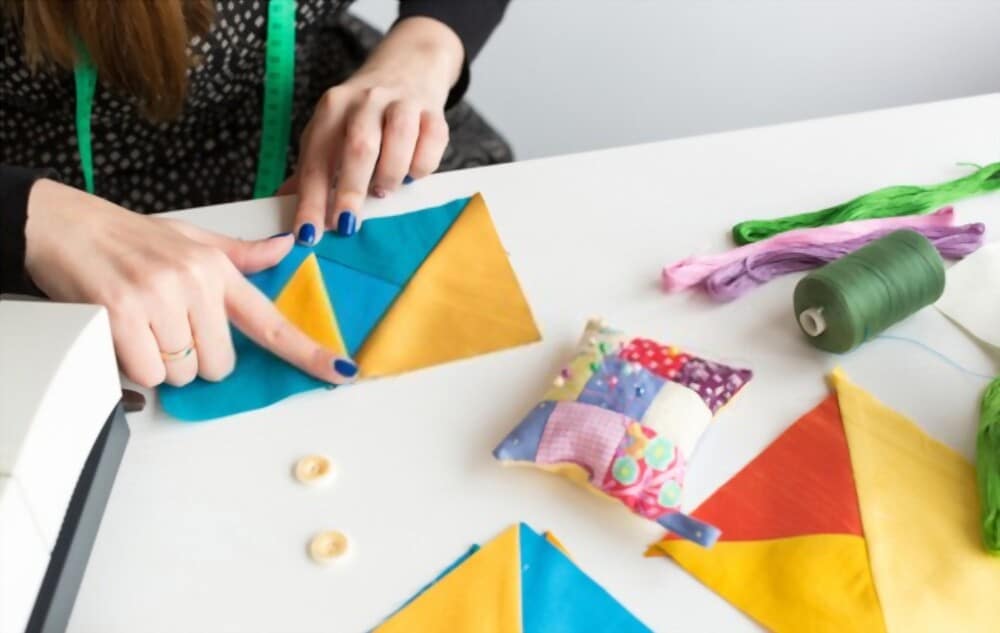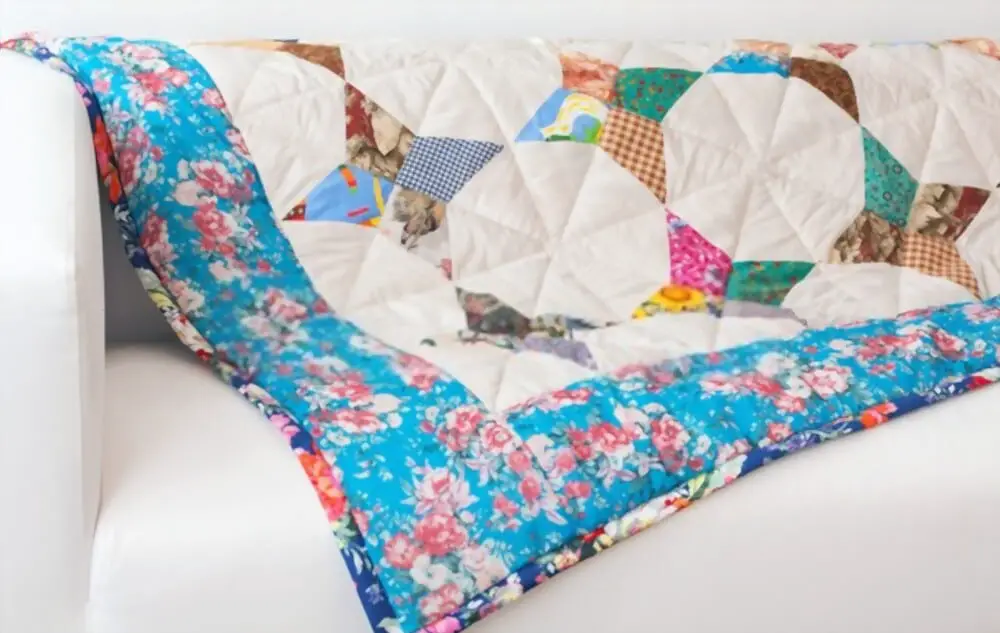Quilts are an interesting craft that has been around for quite some time. Learn about the different types of quilts that have been out there.
Quilting is a form of sewing, a craft that involves the making of quilts or other textile items. Quilting can be done by hand, by machine, or by a combination of the two.
It is usually carried out as a hobby although it has been commercialized and sometimes mass-produced.
The quilt can be classified according to the variety of stitches used to join the layers of fabric together.
Quilts date back to the early 1600s. Originally they were used as a bed covering, but now they are often used as wall hangings or decoration. The word “quilt” comes from a Middle English verb meaning “to quilt.”
There are many different types of quilts. They can be classified by how they are made, what they’re made from, and their use. Quilts can be made from a variety of materials such as cotton, wool, or silk. They may also have a specific use such as being decorative or providing warmth.
Types of Quilts
Let’s have a look at the basic types of quilts.
Pieced Patchwork Quilts
Pieced Patchwork Quilts are a traditional American quilting technique. The method is also known as “crazy patchwork” and “log cabin”.
The piecing process involves cutting scraps of fabric to create a variety of shapes and patterns before arranging them on the quilt top. These scraps can be collected from unfinished garments, worn-out clothing, or outgrown children’s clothes.
Scrap Quilts
Scrap quilts are perfect for people who like to be creative, and they can be completed in a very minimum time span.
Scrap quilts are a perfect solution for people who love to make things with their own hands and also like to use what is readily available.
Scrap quilts can be made in the minimum time possible, which makes them perfect when you don’t have enough time or when you want to make something quickly.

String Quilts
String quilts are also called memory quilts. It is a type of quilting that is done with the help of yarn and sewing thread. A string is used as the quilting material. The strings are either tied together, sewn with a sewing machine, or crocheted with crochet thread.
There are many techniques for making string quilts. You can use string to make a design on your own or you can use the pre-made patterns that are available online.
Since string quilts are not large enough to cover oneself, they were mostly used as decorative items. They were usually hung on the wall or placed on bedspreads or cushions.
Applique Quilts
Quilts are an American tradition that has been around since the 18th century. Quilting is an art form that is passed down from generation to generation.
Applique quilts are quilts that have embroidery sewn on them to create images and patterns. Applique quilts were frequently made by the Amish community, which used applique to decorate their clothing. Today, applique quilts are made by many different people who love the craft of applique and take pride in creating these beautiful pieces of work.
Applique quilts are not difficult to make and they can be customized to fit your needs. All you need is a little bit of time and patience!
Broderie Perse Quilts
Broderie perse is a sewing technique that has been mainly used in quilting and is now being used in clothing, accessories, and home decor.
Broderie Perse Quilts are considered one of the most traditional art forms. They are made by sewing together pieces of fabric with the use of thread. The skill of quilting is passed on from one generation to another.
Crazy Quilts
The idea of crazy quilts came from the need to use up scraps of fabric. Quilts are also made with wool, cotton, silk, or other natural fibers.
The quilt is made by cutting squares or triangles of fabric into strips, then sewing the pieces back together in a different order until they are in a light color on one side and dark on the other.
For example, to create a crazy quilt, sew together only three edges of each piece, then sew these three pieces together in another shape to produce an entirely new pattern when the quilted pattern is revealed when finished.
Trapunto Quilts
Trapunto quilts are also known as “bobbin” quilts because the technique involves sewing the fabric together with bobbins.
The trapunto quilting technique involves the insertion of extra fabric into the space between two other layers. The name trapunto derives from an Italian word meaning “embellished”.
The technique became popular in the 1700s when Queen Marie Antoinette of France sent European quiltmakers to Philadelphia to teach her American subjects how to make this style of quilt.
Nowadays, trapunto is more often made with machine piecing techniques than handmade methods, but many people still think that this type of quilt is more difficult than other types.
Trapunto quilts are made by sandwiching layers of fabric together. The sandwich should consist of two layers of equal size sewn together along one edge, and then a third layer that is slightly larger sewn onto that edge.
The third layer will have cut-outs that go through both top pieces and then back to the bottom piece to form an opening in the center where you can work your stitches.
Whole Cloth Quilts
A whole-cloth quilt, also known as a whole-cloth quilt or an all-cloth quilt, is a kind of quilt that is made with just one type of fabric.
The design of the pattern is cut into the fabric rather than pieced together. Sewing these pieces together can be tricky and time-consuming.
There are many benefits to making your own whole cloth quilts, including that you can create exactly what you want and that it will be unique to your style. But before you start cutting up fabric, make sure you know how to make a whole cloth quilt!
Trapunto and whole-cloth quilting are often combined to give the whole quilt more visible relief and texture.
Stenciled Quilts
A stencil is a form of art that is made from two-dimensional material typically paper. This stencil can be used to cover a surface with shapes and patterns usually in paint or ink, but it can also be used to cut out shapes from a sheet of paper or other material.

The most common type of stencil used today is in the form of lettering, numbers, and symbols on street signs. Personalized messages are often found on products such as T-shirts and bumper stickers. Rubber stamps are often used for this purpose as well.
A stenciled quilt is a quilt that features a design created by using fabric paint and/or an inkjet printer to print textured designs onto fabric
Stenciled quilts are an easy and fun project for anyone. You can make them as a gift or for your home.
Why stenciling is a good idea:
– Stenciling makes it easy to create beautiful patterns and designs with little effort
– It’s easy to take on any level of difficulty, whether you want very simple shapes or complex designs
– They are perfect for beginners and experts alike
– You can easily personalize them with your own colors, patterns, and textures
Sizes Of Quilts
Quilts are square or rectangular pieces of cloth that are sewn together to warm the person under them.
There are different types of quilts that are usually made of wool, cotton, silk, or blends of these fabrics. The size of the quilt you need depends on how big you want your bed to be or how much space you have available.
Here is a list of the most common sizes for quilts:
- Twin – 36×75 inches
- Queen – 60×90 inches
- King – 76×120 inches
- California King – 72×84 inches
Types of Quilts: Conclusion
If it’s your first time sewing quilts, then choosing a simple pattern and fabrics that you like or have on hand is good practice to get you used to the process.
Make sure that the finished product is useable and that the size doesn’t matter too much as this way you can make a small wearable item or just an art piece.
Quilts can be made in countless different styles. The goal is to create a quilt that best suits the needs and desires of the individual person who will use it.
Check Out These Posts Too!
Good luck!

Robert Patricia
Robert Patricia is a data analytic and content creator. He has worked extensively with large data sets to glean insights for both public and private sector clients. He has used this knowledge to create compelling content for brands across the internet. Albert also enjoys creating content for websites and social media. He is an expert at creating catchy headlines and understands how to capture the attention of readers.
